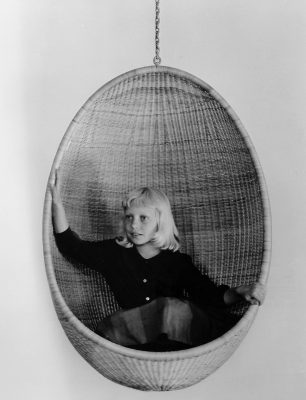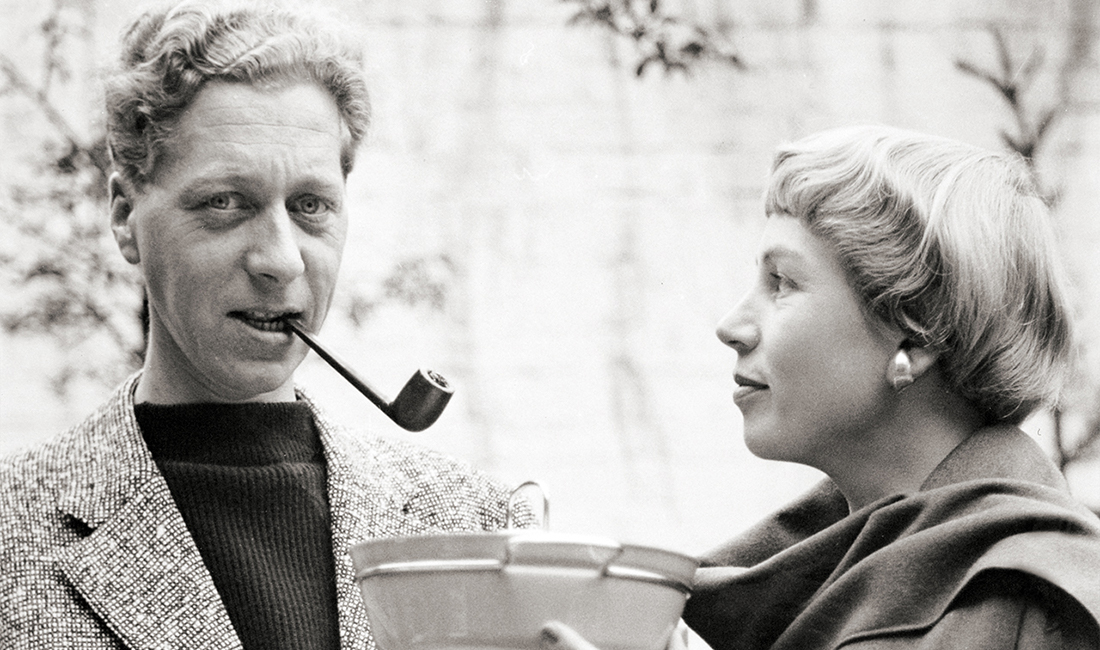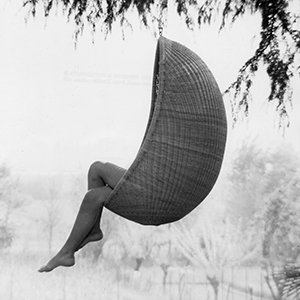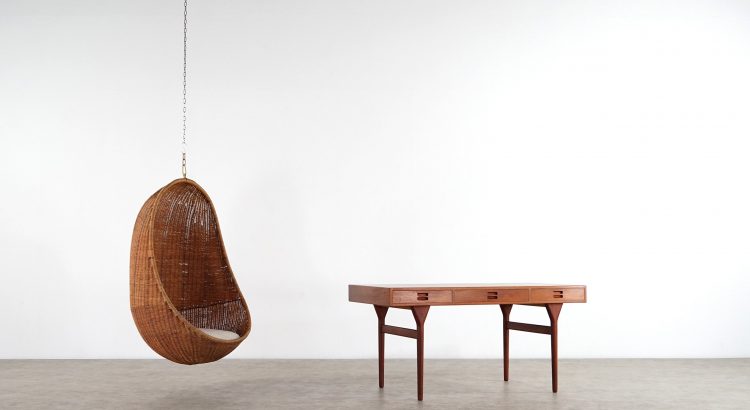The Hanging Egg Chair, designed by Nanna & Jørgen Ditzel in 1957, is known for its timeless design characterized by soft feminine charm and the sturdy rattan material.
Nanna Ditzel, a woman in the male-dominated world of industrial design, was a leading member of the generation of postwar designers who created modern design movement in Denmark, widely known as “Scandinavian design”. Scandinavian style of modernist design was being born and no single creation expressed this spirit more than her Hanging Egg Chair, designed in 1957.
Suspended by a chain from the ceiling, this no-gravity chair suggested a liberated lifestyle, free from earthbound fears.
Elegantly minimal, natural, intimate, and designed for the home and family, the hanging egg chair was often featured in interior and fashion magazines.
Contents
Combining Warmth & Minimalism, Style & Function

Unlike many other trendy or eye-catching pieces of furniture that impress aesthetically, but fail in terms of comfort and usability, the hanging egg chair successfully combines form and function. Although stylish and modern all Nanna Ditzel’s designs were, above all, sensitive to the requirements of comfort and livability.
She incorporated the minimalist visual elements that characterized the “Scandinavian-look” of furnishings and architecture of the mid-1950s to 1960s period and combined it with the friendly warmth of rattan.
The combination of a simple chain suspending a wicker rattan basket artfully sculpted into the iconic egg shape gave rise to the entire “floating chair” movement. With a single cushion located within the floating sculpted basket, sitting in it creates a feeling that one is entering a truly personal space. It creates privacy and comfort in what some characterize as a seating pod that uses the most naturally ergonomic shape possible — the oval.
Nana & Jørgen Ditzel
Nanna Ditzel was born in Copenhagen, Denmark in 1923. She trained as a cabinetmaker before going on to study at the School of Arts and Crafts and the Royal Academy of Fine Arts in Copenhagen. She was always inspired by the challenges of new materials and techniques, and in the 50’s she experimented with split-level floor seating. Nanna was a pioneer in the fields of fiberglass, wickerwork and foam rubber, and in various disciplines such as cabinet making, jewelry, tableware, and textiles.
Nanna and her husband Jørgen Ditzel exhibited their first furniture designs in Copenhagen. They won various awards together, including silver medals at the Milan Triennale in 1951 and 1957 and a gold medal in 1960, and the prestigious Lunning Prize in 1956. But their life and work together ended abruptly when Jørgen passed away unexpectedly in 1961 at the age of 40.

Photo via nanna-ditzel-design.dk
After Jørgen Ditzel’s death in 1961, Nanna continued to design, and in 1968 she moved to London where she established the Interspace International Furniture and Design Centre, an institution which developed a high reputation as a center for experimental design.
Nanna Ditzel returned to Denmark in 1986 and opened a combined design studio and furniture workshop in Copenhagen.
A Leading Figure in the Renewal of Danish Design
With her postmodernism attitude and rebellion against tradition, she became a leading figure in the renewal of Danish design in the 1990s, well after her 70th birthday. Very often, her works had a subjective starting point, which was contrary to specific problems to be solved. However, she had a magnificent ability to transform her artistic dreams into very functional and purposeful designs.

DESIGN: NANNA & JØRGEN DITZEL
PRODUCED BY SIKA DESIGN DENMARK
At an age when most other people have long since retired, the grand old lady of modern design continued to attract worldwide attention and she welcomed the inspiration that came from new materials and production methods.
For Ditzel, the aesthetics of the chair were just as important as the function:
“It is very important to take into account the way a chair’s appearance combines with the person who sits in it. Some chairs look like crutches. And I don’t like them at all.”
Nanna Ditzel was one of Denmark’s most versatile and creative female designers of the 20th century and throughout her life, she was awarded numerous prizes. In 1998, she was awarded the lifelong artist’s grant by the Danish ministry of culture and a book of her work, Motion And Beauty, was published. She has died in Copenhagen at the age of 81.
The chair is manufactured by Sika Design, one of the oldest Scandinavian producers of rattan and wicker furniture. Be it as part of a minimalist theme, or part of an eclectic blend of furnishings, the hanging egg chair will always add a bit of refined elegance to any space and inevitably become the central point of any decorative scheme.






